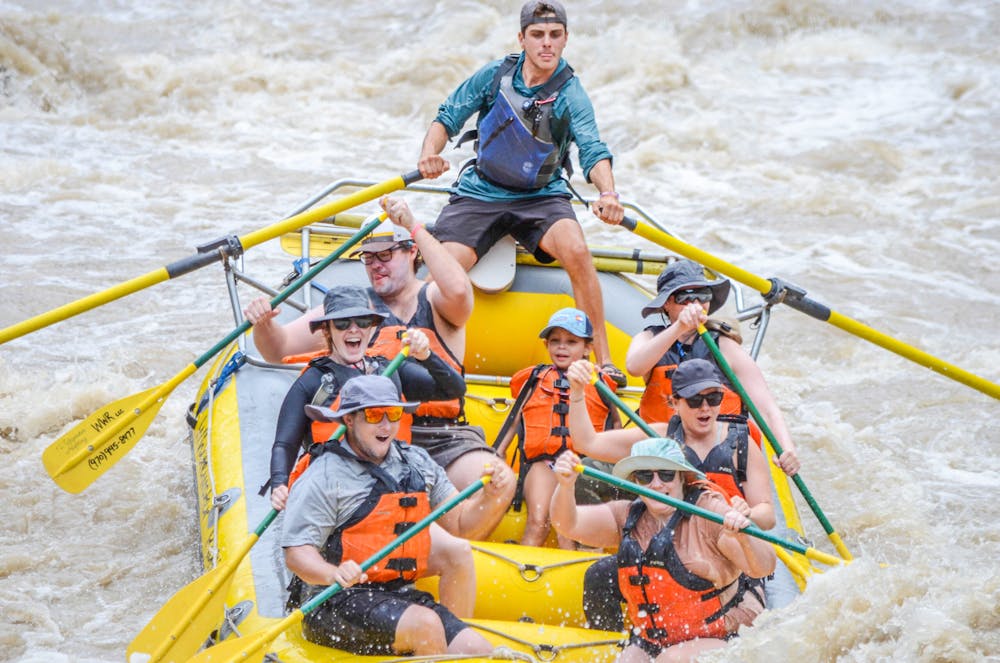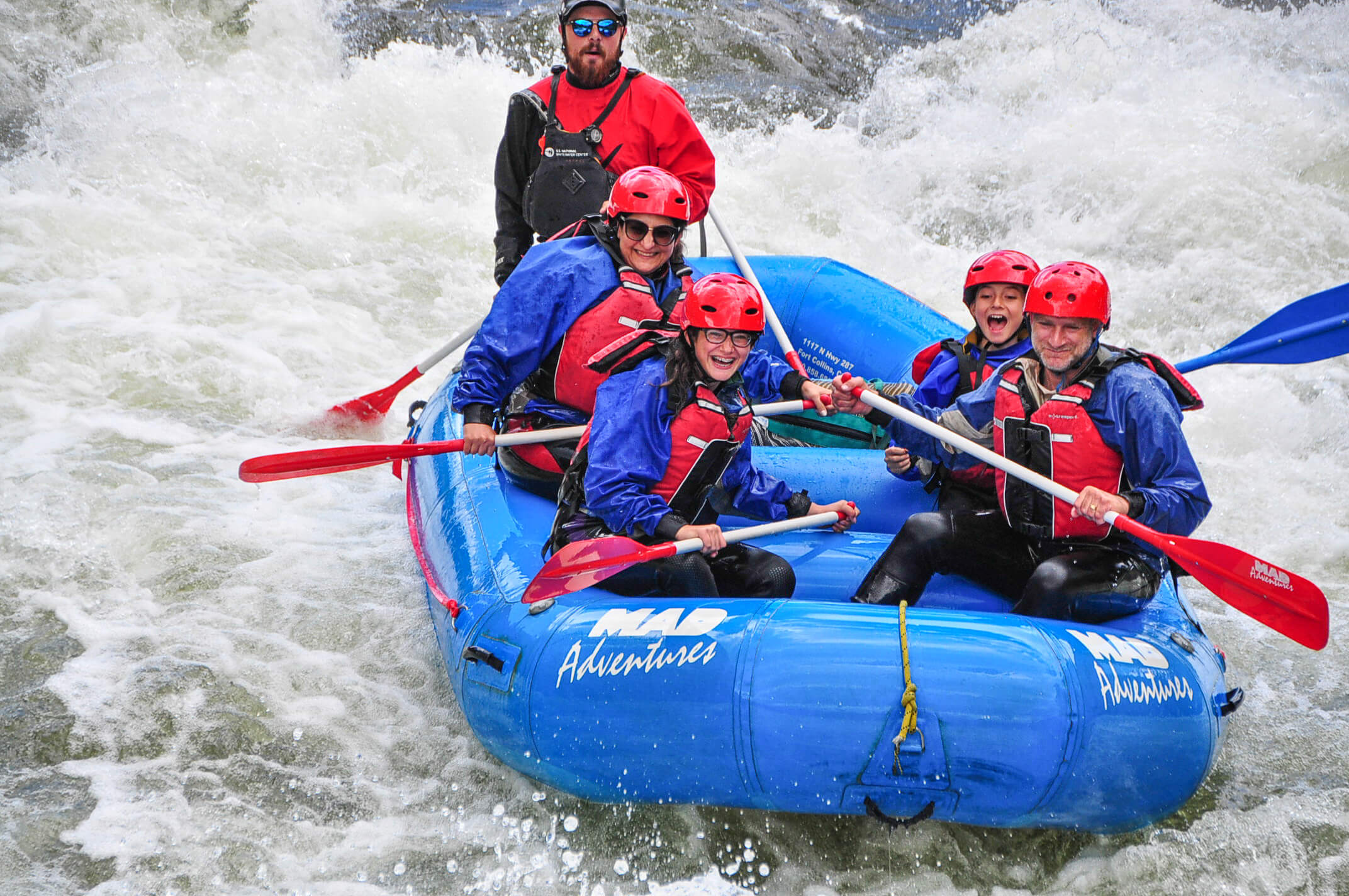Plan Your Ultimate White Water Rafting Colorado Vacation
Plan Your Ultimate White Water Rafting Colorado Vacation
Blog Article
Necessary Skills for Water Rafting
Mastering the art of water rafting requires a combination of precise skills and knowledge to navigate the unforeseeable currents of rivers, making it a thrilling yet potentially dangerous task. As enthusiasts get ready to start their following experience, it is critical to furnish oneself with essential expertises that exceed simply paddling. From understanding the details of river dynamics to swiftwater rescue methods and seamless group interaction, the journey down the river requires a mix of proficiency and flexibility. With security protocols functioning as a foundation, individuals are encountered with a diverse obstacle that necessitates a meticulous approach and undeviating focus.
Paddling Strategies
Grasping efficient paddling techniques is essential for browsing water plethoras securely and efficiently. Appropriate paddling not only pushes the plethora ahead yet also aids in maneuvering and guiding with differing water problems. One fundamental strategy is the forward stroke, where paddlers dip the blade fully into the water and pull it back together with the boating to produce propulsion. Timing and sychronisation are key to ensure that all paddlers remain in sync, maximizing the power of each stroke.
In addition to the forward stroke, the draw stroke is important for making quick modifications or pulling the plethora better to an item. By placing the paddle blade perpendicular to the water's surface area and pulling the water towards the plethora, paddlers can efficiently alter the vessel's direction. The backstroke serves as a useful tool for backing up or reducing down the boating when required.
River Reading
Effective paddling techniques, such as the forward stroke and draw stroke, play an essential duty in navigating and interpreting river currents, a skill understood as river analysis. River analysis includes the capacity to analyze the speed, deepness, and direction of the water circulation to make educated decisions while browsing rapids. By understanding how the water moves obstacles and through different networks, rafters can select the very best path to safely go across the river.
Eddies, for example, are areas where the water flows in a circular motion, frequently supplying possibilities for rest or critical maneuvers. Hydraulics, typically known as "holes," are areas where water recirculates back upstream, posturing prospective dangers to rafts.
Mastering the ability of river analysis is important for pleasurable and secure rafting experiences, allowing paddlers to navigate difficult waters with confidence and accuracy.

Swiftwater Rescue
Comprehending swiftwater rescue strategies is crucial for water rafting enthusiasts to react efficiently in emergency situation scenarios on fast-flowing rivers. Swiftwater rescue involves a set of specialized abilities and knowledge focused on safely extracting individuals from swift-moving water. One key aspect of swiftwater rescue is recognizing the dangers present in fast-flowing rivers, such as strainers, undercut rocks, and solid currents, to prepare and perform effective rescue procedures.
Appropriate tools is vital for swiftwater rescue, including toss bags, rescue ropes, headgears, and personal flotation devices. Rafting enthusiasts need to be proficient at utilizing this equipment in high-stress situations to ensure the safety and security of themselves and others. In addition, swiftwater rescue methods typically involve synergy and coordination amongst rafters to execute intricate rescue maneuvers properly.
Educating in swiftwater rescue is very recommended for people engaging in water rafting tasks, as it furnishes them with the needed skills to handle emergency situations quickly and successfully. White like it Water Rafting Colorado. By comprehending and exercising swiftwater rescue techniques, water rafting fanatics can boost their safety and security and that of their fellow rafters on difficult river explorations
Group Communication
Effective teamwork in water rafting relies heavily on smooth interaction among staff member to ensure worked with and secure navigating with tough river problems. Clear and concise communication is critical for the success of any rafting expedition. Employee should be able to effectively communicate essential information such as paddling commands, caution signals, and navigational instructions.
In the hectic and typically uncertain setting of river rafting, prompt and accurate communication can imply the difference between a possible calamity and an effective run - White Water Rafting Colorado. Each employee plays an essential duty in the overall interaction procedure, whether it be paying attention diligently to the overview's directions, communicating details to various other paddlers, or signaling for help when needed
Establishing an usual language and interaction system prior to striking the water is vital. This guarantees that see page every person gets on the same page and understands exactly how to interact properly during the rafting journey. By cultivating a culture of open interaction and common regard, rafting groups can enhance their performance and security on the river.

Safety And Security Procedures
In the context of water rafting, the structure of team interaction developed throughout explorations is more reinforced through stringent adherence to safety and security methods. Security procedures are vital in ensuring the health of both rafters and overviews throughout water rafting trips. One vital safety and security procedure is the appropriate using of individual flotation devices (PFDs) by every person on the plethora. PFDs are crucial in emergencies to maintain participants afloat and provide buoyancy. In addition, rafters have to be fluent in swiftwater rescue techniques and methods in situation of someone falling overboard or if the raft tips over.
Another trick security method is the detailed instruction given by overviews before getting started on a rafting trip. This instruction typically includes details on paddling techniques, what to do in case of various emergency situations, and signals utilized for communication throughout the trip. It is vital to have actually designated security kayakers going along with the team to offer instant assistance if needed. By strictly adhering to these safety and security protocols, water rafting expeditions can be both thrilling and risk-free for all participants included.
Conclusion
In final thought, understanding vital abilities for water rafting is essential for a safe and pleasurable experience on the river. Paddling strategies, river analysis, swiftwater rescue, team communication, and security protocols are all essential parts that add to a successful rafting journey. By developing these abilities, rafters can navigate challenging waters with confidence and make certain the security of themselves and their staff member.
Mastering the art of water rafting calls for a combination of specific abilities and expertise to browse the unpredictable currents of rivers, making it a thrilling yet possibly unsafe activity. By putting the paddle blade perpendicular to the water's surface area and Read Full Article drawing the water in the direction of the boating, paddlers can successfully alter the vessel's direction.Recognizing swiftwater rescue methods is critical for water rafting lovers to respond properly in emergency situations on fast-flowing rivers.Effective synergy in water rafting depends greatly on seamless communication amongst team participants to guarantee collaborated and safe navigation with challenging river conditions.In verdict, understanding essential skills for water rafting is critical for a satisfying and risk-free experience on the river.
Report this page